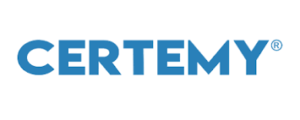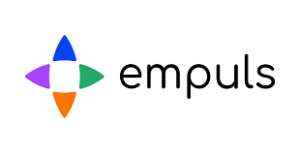What Ιs Workforce Management Software?
Workforce management software (also known as WMS) is software designed to streamline and automate a variety of tasks involved in managing company personnel. The primary functions of such a tool include optimizing worker schedules, offering simple self-service options for employees and managers, and ensuring workplace safety.
As a rule of thumb, a workforce management (WFM) solution offers a variety of features to optimize the utilization of your workforce. It encompasses many features, such as forecasting labor demands, absence management, offering employee portals to manage leaves, and reporting according to company policies. In general, better workforce management software can offer many benefits to every organization but can be particularly helpful to companies with complex employee schedules, shift workers, and wage regulations.
What Is The Purpose Of Workforce Management Software?
Depending on tool features and company needs, workforce management software can have multiple purposes. It can provide solutions to HR issues, bringing harmony in the workplace and enhancing operations. Let's dive deeper into some of the most vital features of this type of software.
Forecast Labor Demands
Among the fundamental features of a workforce management solution is its ability to analyze current trends, historical data, and other information that shapes employee requirements. That is why it plays a crucial role in forecasting labor demands.
To illustrate, software that examines patterns in employee attendance, scheduling, and productivity can potentially forecast the needs of a company's workforce with accuracy. That is because it utilizes valuable data in order to do so. Especially in shift-based environments, data like peak hours, seasonal fluctuation, and project timelines can help avoid the pitfall of understaffing. In essence, this forecasting capability assists companies in acting proactively by adjusting their staffing levels and, hence, ensuring they have the appropriate number of employees with the right skills available to meet operational demands.
Consequently, workforce management systems can help large corporations deal with overstaffing and understaffing by analyzing the right data and allocating staff accordingly. Eventually, this can reduce labor costs, offer better services, and reach the company's goals efficiently.
Employee Schedules
There is a dual benefit to using workforce management software for your organization. One is that it helps the HR department and management team by automating the process of employee scheduling. The other is that it helps employees access the schedule directly and proceed to changes when necessary.
In employee scheduling, a WFM tool takes into consideration factors like business needs, availability, skills, labor laws, preferences, and other data to ensure efficiency on any occasion. At the end of the day, an effective employee scheduling system leads to higher employee satisfaction and ensures solid collaboration.
Payroll
Payroll processes can also be enhanced with the proper use of a workforce management system with task automation, compliance monitoring, and accuracy. A tool like that can contain an employee working-hour tracking system that can categorize working hours into regular or overtime and include compensation information. It simplifies this rather complicated process, which includes reports, tax calculations, benefits, and bonuses, reducing the risk of potential errors.
In this way, the whole process is clear and automated for the benefit of both management and employees. Ensuring that the payroll is on time and accurate can increase employee productivity and happiness in your working environment.
Time Tracking
Time tracking is also among the features of workforce management software. Such features can accurately monitor, track, and analyze employee working hours. The tracking feature can also precisely calculate salaries and benefits.
Needless to say, in a WFM tool, the time tracker is automated. There is no need for an employee to manually add their working hours. Eventually, the risk of human error is drastically reduced, while reporting accuracy increases.
Employee Portal
Another key aspect of an inclusive, automated WFM solution is its employee portal. As a multifunctional tool, it can offer a unique employee experience. In the portal, employees are able to access important features like the ones mentioned earlier (time tracking, scheduling, etc.) and perform tasks efficiently. Moreover, they can access important material like training, policies, performance reviews, and other information valuable for employee performance.
Having full access to this information enhances the transparency in the relationship between employer and employee. It creates a safe space where employees can express their concerns, have knowledge of everything related to their work, and build trusting relationships with the company.
Reports
The ability to access important information about staff makes a workforce management platform ideal for proper reporting. WFM tools offer a variety of analytics and insights into every aspect of your business. By analyzing data like working hours, tasks, skills, operations, costs, and other metrics, they can generate detailed reports with insightful data. These reports can assist companies in identifying areas for improvement, predicting errors, reducing costs, and increasing the efficiency of operations.
Who Uses Workforce Management Software?
There is a wide variety of organizations in multiple industries that can utilize workforce management solutions successfully. We mainly witness companies with shift-based staffing, complex schedules, and large enterprises getting the most out of WFM tools. In this section, we explore in detail the most common industries that can utilize such software.
Hospitals And Healthcare
As corporate environments, hospitals and healthcare facilities are known for their shift staffing complexities and necessity for streamlined operations. Workforce management software helps in optimizing task management, schedules, costs, and benefits in this industry, where it is vital for the right person to be in the right place at the right time, doing the right task. Professionals like doctors, nurses, and technical staff are required to act immediately to save lives.
In the market, there are many WFM tools for healthcare facilities. By using the appropriate WFM tool, a healthcare facility can manage scheduling based on patient needs, check the licenses of doctors to ensure eligibility, and track working hours. Moreover, it can apply company regulations and training and streamline payroll processes. It is worth mentioning that a happy employee in a healthcare facility can make a big difference when it comes to saving people's lives.
Hospitality
Another industry with complex staffing is the hospitality industry. Although it contains the same complexities as the healthcare industry, it differs in the seasonality of its staff. This means that the hospitality sector requires fast onboarding and streamlined training for new employees who arrive every season. Similarly to the healthcare industry, hospitality also contains shifting staff and complex schedules that require an automated process that a hospitality WFM tool can provide.
Human Resources
The main area where workforce management is pivotal is Human Resources. HR professionals find WFM tools handy when it comes to managing the workforce, scheduling employees, tracking working hours, and processing payroll. WMS allows technology to take over in areas that require data and analysis, like performance reporting, minimizing the risk of human error. Most importantly, it uses past data to predict future talent needs, and when staff is needed, preventing over- or understaffing.
A workforce management solution can be an HR department's hero. It connects employees with HR staff directly, allowing enhanced communication that can build a trusting relationship. Such communication can not only remove delays in requesting time off but also help the HR department enforce company policies when necessary. In general, the right workforce management software for HR improves efficiency and helps the HR department manage the working environment effectively.
Manufacturing
Another industry operating under pressure that a workforce management system can relieve is manufacturing. Here, the burden lies in the amount and quality of the final product. There is constant pressure to satisfy client needs, while every delay and misdelivery can be critical for the company.
In this scenario, a proper workforce management solution for manufacturing provides a bird's-eye view of the production process. It helps keep production smooth by streamlining operations, training employees fast, and putting the right skills in the right section of the production process. Besides, managing risk and meeting compliance requirements are vital but can be time-consuming and costly. With a workforce management system, you get what you need, minus the burden.
Retail
Retail companies can utilize workforce management solutions to increase sales. In addition to the features we mentioned above for other industries, data management is of great importance in retail. By including all working operations under one workforce management software for retail, you can collect valuable data to optimize the schedules of your employees and increase sales. For instance, you can spot sales patterns of certain employees or teams and plan your retail accordingly.
Workforce management software automates compliance tasks, streamlines payroll, and ensures accurate pay and benefits. Reporting tools aid data-driven decisions and simplify mandatory reporting.
Basic Features Of Workforce Management Software
There are a variety of features available when it comes to workforce management tools. Each feature serves a unique purpose in an organization. That is why it is vital to focus only on the ones tailored to your business needs. Below, we explore the most noteworthy features that these software tools share.
Calendar Management
Calendar management is a common feature in workforce management systems. It serves as a platform for viewing, organizing, and scheduling tasks and meetings related to the company. Both employees and managers can view each other's schedules, plan appointments, and add deadlines and upcoming events. All that can be visualized with coloring, categorization, and titles to minimize confusion.
With this feature, HR professionals can quickly spot areas of improvement in working operations. Also, they can identify and quickly solve scheduling issues while communicating with the staff directly. Overall, calendar management can increase employee productivity, streamline operations, save resources, and create better communication.
Compliance Management
Compliance management can often be a headache for large enterprises. That is where workforce management systems can save the day. Having all the necessary documentation, policies, and training in one place can prove beneficial for the maintenance of company policy. The compliance tracking feature offers a unique space where employers can monitor compliance-related operations, training, and certifications while enforcing penalties when necessary.
Having a compliance database can ensure that company regulations are followed. Eventually, it can mitigate legal risks and penalties and maintain a productive working environment.
Employee Scheduling
The employee scheduling feature is among the strongest aspects of a workforce management solution. As the name indicates, it helps HR professionals with scheduling employee work schedules and swapping shifts. However, this feature is especially important because it is connected to the database that includes information like skills, availability, demands, and payroll. With the use of this data, workforce management software can optimize employee scheduling to maximize employee productivity, performance, and availability, keeping both employees and employers happy.
Employee Vacation Tracking
Part of the scheduling is always day-off requests and vacations. Predictive scheduling requires the early consideration of these requests in order to avoid conflicts. To that end, workforce management tools include employee vacation tracking. This feature allows employees to check their available vacation days, request days off directly, and be informed about vacation policies. On the other hand, employers can easily review, approve, or deny requests based on staff schedule and demand. The proper use of this feature ensures available staffing at all times while eradicating delays in day-off requests.
Labor Forecasting
There are many examples of workforce management software with labor forecasting in the market. It is a feature that allows companies to accurately forecast staffing needs. The system utilizes its database with information including trends, industry, market, and company historical data to provide insightful working requirements. This feature allows managers to avoid understaffing and overstaffing, hence reducing labor costs while maintaining high levels of employee productivity.
Payroll Management
Company managers and HR departments can also utilize workforce management software with payroll management. This feature streamlines the rather complex payroll process to ensure accurate employee compensation, as it automatically calculates wages based on working hours, taxes, skills, and labor laws. Automating this process drastically reduces the risk of errors and minimizes the required time while increasing payroll accuracy. Moreover, it allows the HR department to deal with other issues that require human factors.
Skills Tracking
Every task requires a specific skillset to be completed efficiently. Operations often fail to meet their maximum potential due to a lack of people with the appropriate skills. Especially in large enterprises with a vast amount of employees, this process can be dangerous. Workforce management software with skills tracking can solve this issue at its core. HR professionals can track the skills of the workforce, identify skills gaps, spot potential improvements, and act accordingly. If utilized correctly, skills tracking can help managers train their employees, hire new ones with the right talent, and allocate human resources based on the skills required for each task.
Employee Database
By definition, an employee database includes all the necessary information about your employees. A workforce management solution with an employee database utilizes this stored information to optimize all of its processes. Specifically, this database can include information like certifications, contact information, personal information, performance history, and job description, among others. This type of database is like a battery charging all other features to ensure data-driven decision making and efficiency.
Time And Attendance Management
Ever since COVID-19, the remote workforce has been expanding in corporate environments. This phenomenon has brought up the need for remote attendance tracking. Workforce management software with time and attendance tracking makes it possible for employees to clock in and out electronically. It often includes mobile apps, online platforms, or even biometric systems to make this easier for remote workers. For employers, it allows them to track the working hours of their employees, which enables accurate compensation.
Reporting/Analytics
The vast majority of the market consists of workforce management solutions with reporting capabilities. This feature allows HR to craft insightful reports with valuable data about the company staff. The employee database, time tracking, and performance and skills management fuel these reports with accurate insights.
Data-driven reports and analytics can help manage the workforce effectively by increasing employee productivity and efficiency and enhancing internal operations. These reports can be utilized in all aspects of the company spectrum since they contain information that affects all business goals.
Workflow Management
Workforce management software with workflow management offers the ability to optimize, organize, automate, and monitor processes. Most of WMS provides customization of workflows so that it is easy to track and complete tasks efficiently. Furthermore, it allows users to spot errors that would block processes in a timely manner. Overall, HR and management can access, edit, and monitor workflows, ensuring that the processes run smoothly and efficiently.
The Benefits Of Using Workforce Management Software
The benefits of using workforce management software vary depending on the industry, company size, and goals. In this section, we explore the benefits most businesses share across industries.
Streamline Operations
The chief benefit of using workforce management software is streamlining company operations. By streamlining operations, a business can centralize its processes, automate complex tasks like payroll, and monitor every aspect of the workforce environment. All this takes the burden off the shoulders of HR and project management professionals, saves time, and minimizes risks associated with human error. At the same time, streamlining operations allows companies to quickly adapt to external and internal changes while maintaining a high level of productivity.
Automatic Attendance Tracking
Workforce management systems can also provide automatic attendance tracking. Thanks to its features of time, attendance, and absence management, a workforce management tool tracks the working hours of employees automatically. This diminishes the need for manual time keeping or third-party time-tracking tools. Meanwhile, the automatic tracker also helps in other areas like payroll and human resource allocation. This way, managers do not have to worry about compensation issues or understaffing.
Improved Workforce Productivity
All of the above-mentioned features and benefits eventually lead to improved workforce productivity. By streamlining operations and task management, there is significant workload reduction, which allows employees to be more productive in the area they specialize in. Automatic time and skill tracking also tend to come in handy since they lead to an optimized human resource allocation and, therefore, optimized productivity. Lastly, employees feel happy and safe in a transparent environment that a workforce management system provides—an environment with seamless communication where they can express their concerns, train, and have control of their work life. At the end of the day, a happy employee is a more productive employee.
A Safer Workplace
There are multiple reasons why a workforce management system provides a safer workplace. One of the main ones is the creation of a transparent environment. In this environment, the communication between employees, managers, and HR departments is direct. This ensures that the employee is heard but also that there is no information lacking. This type of software also contains compliance documentation, training, and everything the employee needs in order to follow company policy. Last but not least, it is a safe workplace when it comes to working hours. Since the tool contains an automatic time, attendance, and scheduling system, the risk of accidents due to work overload is minimized drastically.
Reduced Cost And Risk
The robotic process automation that a workforce management system provides can eventually reduce cost and risk for a business. Processes like automated scheduling, payroll, and task management ensure that there is no waste when it comes to human resources. Costly errors like overstaffing, overtime payments, legal penalties, and regulations are also reduced in this way. A company can reduce further operational costs by monitoring the performance of the workforce, identifying skills, and improving these skills with training. Generally speaking, an optimized workforce management system that automates processes helps companies do more with less and safely.
Employee Engagement
Employee engagement is also enhanced by the use of workforce management systems. The creation of a safe and transparent workplace that enables direct communication with management helps employees feel like an integral part of the company. And, knowing that they are valued, they contribute more to the company's goals. Additionally, a workforce management tool helps in building a culture of trust. A feeling of empowerment, trust, and safety leads employees to be more engaged at the core of the company. The higher the contribution, the more areas for improvement to be unveiled.
Flexible Scheduling
As already mentioned, one of the main features of workforce management software is calendar management. Through calendar management, employees and managers can set their preferences for an optimized schedule. The schedule takes into account many factors, such as skills, availability, demand, and more. That is exactly how workforce management tools improve flexible scheduling. If an employee cannot make it for their shift or wants to change their schedule, the system will automatically come up with the best possible solution. This way, manual scheduling errors are avoided, and both parties have less to worry about when something unpredictable occurs.
Security
Protecting valuable company and employee information is vital for a workforce management system. That is why these systems use measures like encryption to ensure data security and prevent unauthorized access. The database is also protected from internal access since it tracks employee certifications, activities, and authorizations. Therefore, any security issue can be tracked quickly to ensure security protocols are followed.
Business Insights
A workforce management tool can become a company's centralized system, helping the tool collect valuable information about employees and the business itself. In the meantime, this information can be visualized in a report and help the business evolve. When software contains and manages information about employees, payroll, schedules, tasks, and processes, the ability to extract insightful reports is improved.
Anywhere Access
Nowadays, workforce management tools provide accessibility to employees from anywhere they are. Mobile apps and internet platforms are among the most common means to do so. Especially for companies with remote employees, this can increase engagement and productivity. Meanwhile, communication knows no barriers since everyone is connected to the same platform.
Improved Payroll Accuracy
There are multiple ways in which workforce management software can improve payroll accuracy. Its ability to automate the payroll process allows it to accurately calculate compensation. This means that there is no risk of human error when it comes to deducting taxes and considering benefits, extra working hours, overtime, and more. Additionally, since employee scheduling and time management are done within the platform, every working hour is properly logged. In the end, both parties can review the transparent payroll process before proceeding to mitigate any possible issues.
What Is The Market For Workforce Management Software?
Academic
Academic facilities can utilize workforce management tools to streamline task and staff management.
Freelancers
There are also cases where freelancers use WFM tools. This can be as part of a collaboration with other freelancers or a project.
Large Enterprises (>10,000)
The most common use case of WFM is large enterprises. Enterprise workforce management software offers control, accessibility, and security for both employers and employees.
Nonprofits
Nonprofit organizations also have complex staffing and operation issues. There is software tailored to their needs in the market.
Public Administrations
Another type of ideal candidate for a WFM tool is the public sector. Public administrations can automate repetitive processes and manage staff with such software.
Small/Medium Businesses
Despite the smaller size of staff, SMBs or medium businesses can also utilize a workforce management system.
Workforce Management Software Deployment Options
In the workforce management software market, there are five important deployment options available. Let's explore them below.
SaaS/Cloud
Workforce management software can be hosted on the cloud. This type of deployment requires no download from the end user since everything is hosted on a remote server. With this deployment option, the WMS vendor is responsible for maintaining the system, updating it, and providing assistance for the end user to access the system. This way, security, accessibility, and scalability are enhanced. The only downside is that these systems are often not customizable when it comes to branding.
Self-Hosted System
Self-hosted workforce management solutions require download. The user downloads the software and is responsible for manually updating it. You can choose this method if a customizable option fits your business goals better.
Self-Hosted Cloud-Based
This is a combination of the two previously mentioned deployment options. Self-hosted cloud-based workforce management tools are hosted on the cloud/server. This can be a third party, as well. Here, control and accessibility are the most important benefits.
Desktop Application
You can choose workforce management software with a desktop application if you need it on your computer. These applications can even be accessible via multiple devices.
Mobile Application
Manage, communicate, and work on the go using workforce management software with a mobile application. You can install the application on your mobile device and access it from anywhere.
Pricing Models For Workforce Management Software
Subscription
WFM tools with subscriptions are common in the industry. In this model, there is a monthly or yearly fee paid in order to access the full service of the software.
Free Trial
There are also workforce management tools with free trials. By choosing this model, you can access the full software for a certain period for free, test it for your business, and then decide if you want to continue using it.
Free
Then, there is free workforce management software. This type of software usually offers its basic capabilities for free while requiring payment for advanced features.
One-Time Purchase License
If you want to avoid paying monthly or yearly fees, you can choose workforce management software with a one-time purchase license. In this model, you pay the full price at once without having to worry about future fees.
Freemium
Freemium is another pricing model advancing in the market. Workforce management software with a freemium model offers most of the service for free while leaving out some advanced capabilities with paid access.
List Of Licensing Options For Workforce Management Software
Free
There is a variety of free workforce management software available. With this licensing option, you are not required to pay a fee. However, if your company lacks developers or an IT department, it might be difficult to get around the coding experience needed since the software offers limited customer support.
Open-Source
The ideal option for companies with their own IT department. Open-source workforce management tools are often hosted online and provide full access to their code. This allows customers to fully customize the end service and make it suitable to their needs.
Paid
The solid pay-to-access model. Workforce management tools with paid licensing offer the full services of their software with a paid fee. Some vendors offer monthly/yearly subscriptions, while others offer one-time paying solutions.
The Future Of Workforce Management
We have already witnessed a rapid change in the global working environment. Ever since COVID-19, more and more organizations tend to advance to their remote era. This has increased the necessity of a remote working environment via a platform and eventually led to a massive increase in the number of workforce management systems in the market.
Now the discussion has moved towards AI integration, which will play a vital role in better workforce management. Artificial Intelligence and Machine Learning are about to take over repetitive tasks and data processing. This shift will positively impact the well-being of employees who can easily change working environments when feeling overwhelmed. Workforce management will become more like human management, enhancing communication and collaboration among employees.
Considerations When Purchasing Workforce Management Software
Not all workforce management systems are for everyone. There are certain factors that indicate whether you are looking in the right direction. Here is a checklist to keep in mind when looking for your ideal software.
Check The Current WFM State
Identify the tasks and operations that would be affected by the use of a WFM tool. Make sure you have reviewed everything before you decide on the software.
Conduct A Self-Assessment
If possible, check for WFM processes that work well while searching for areas that can be improved.
Analyze WFM Maturity Level
Understand your business needs. Check internally if and why you need a workforce management system. Are you looking for advanced or basic features?
Prioritize Requirements
Perform an analysis and rank the WFM tool features you need. This can be a cost-effective step prior to entering the market.
Integration Needs
Consider the rest of the software you utilize for your business needs. Make sure that the WFM tool you are about to use offers integration to this software when necessary.
Multiplatform Support
It is vital to not limit yourself to one platform. This can affect accessibility if much of your workforce and the vendor use different platforms.











